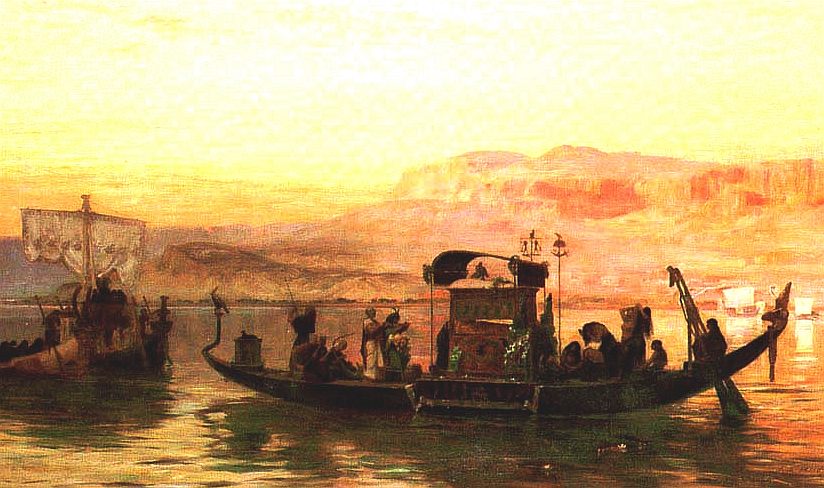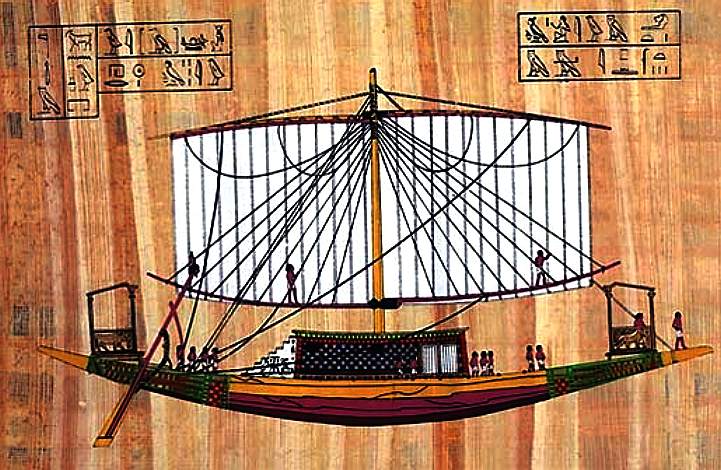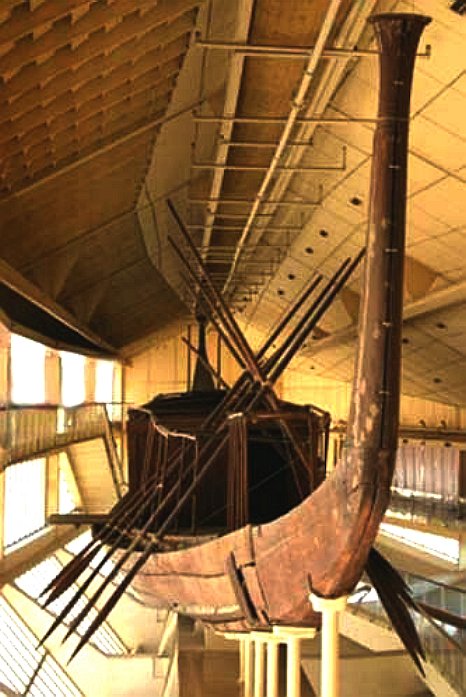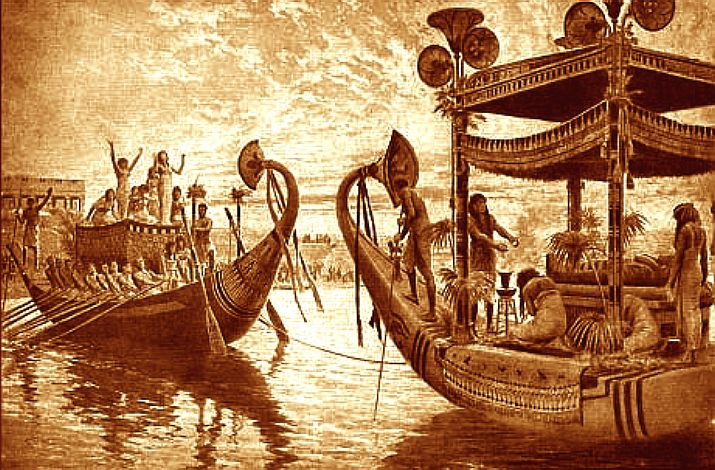|
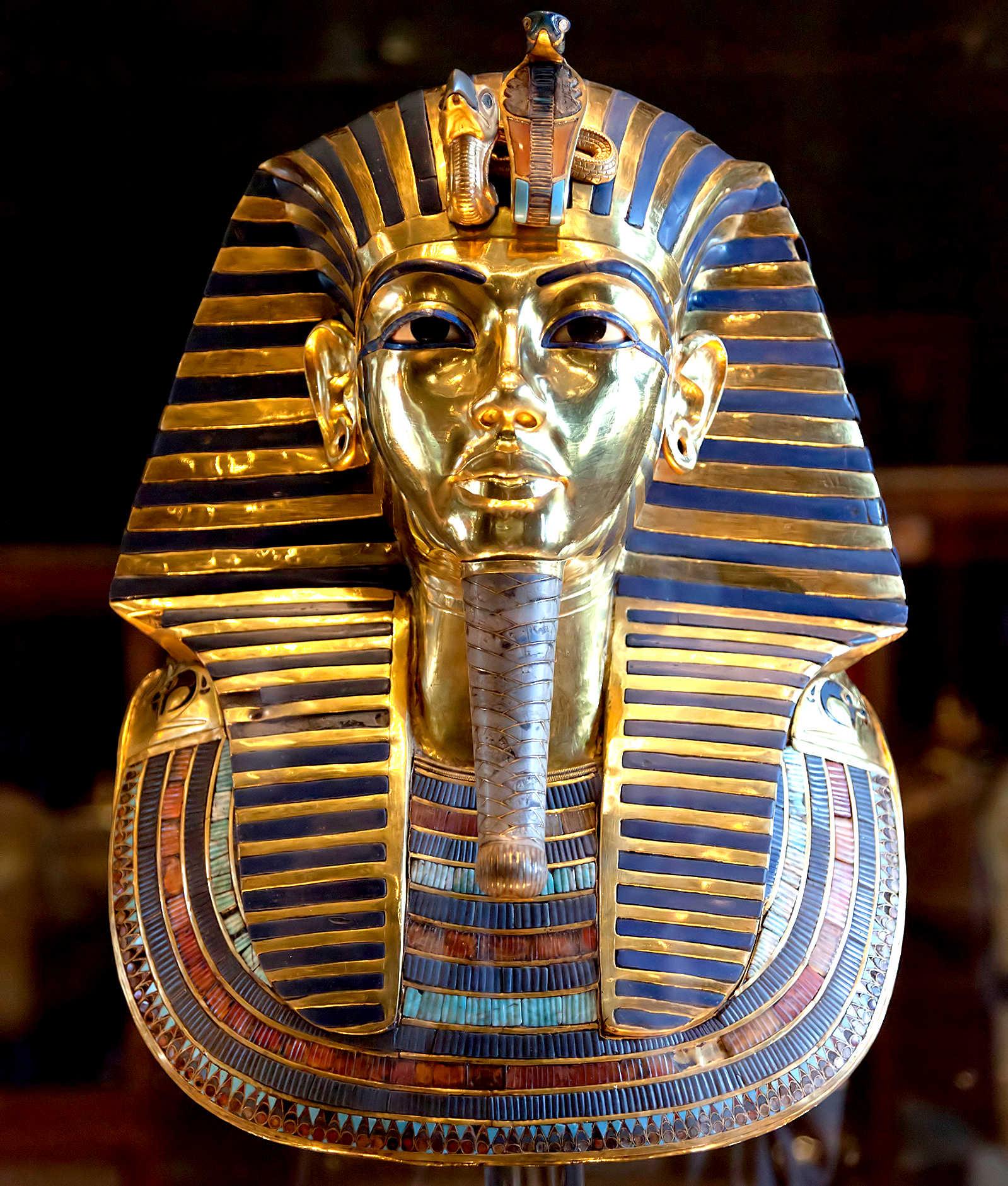
Golden
death mask of the boy king
Howard Carter (9 May 1874 – 2 March 1939) was a British archaeologist and Egyptologist who discovered the intact tomb of the
18th Dynasty Pharaoh Tutankhamun in November 1922, the best-preserved pharaonic tomb ever found in the
Valley of the
Kings. And an archaeological treasure, by way of a time
capsule.
The Curse of King
Tut. While it can’t be proven that this specific fungus infected the now long-dead men associated with the curse of King Tut, some have noted that Carnarvon, Gould, and Mace all displayed symptoms consistent with an infection from
Aspergillus
flavus.
Microbiologist Bolesław Smyk found
Aspergillus Flavus throughout the tomb of Tutankhamun, and speculated that it may have contributed to the deaths. The fungal species is the second-leading cause of aspergillosis in humans, a potentially deadly disease that most frequently affects the lungs of those with weakened immune systems. In milder cases, the condition can cause acute inflammation and breathing problems, but in harsher instances, the fungus can grow in the lungs and even spread throughout the body. In 1998, Dr. Sylvain Gandon, a researcher at the Laboratoire d’Écologie in Paris, showed that fungal spores can lay dormant for hundreds of years, retaining their potency.
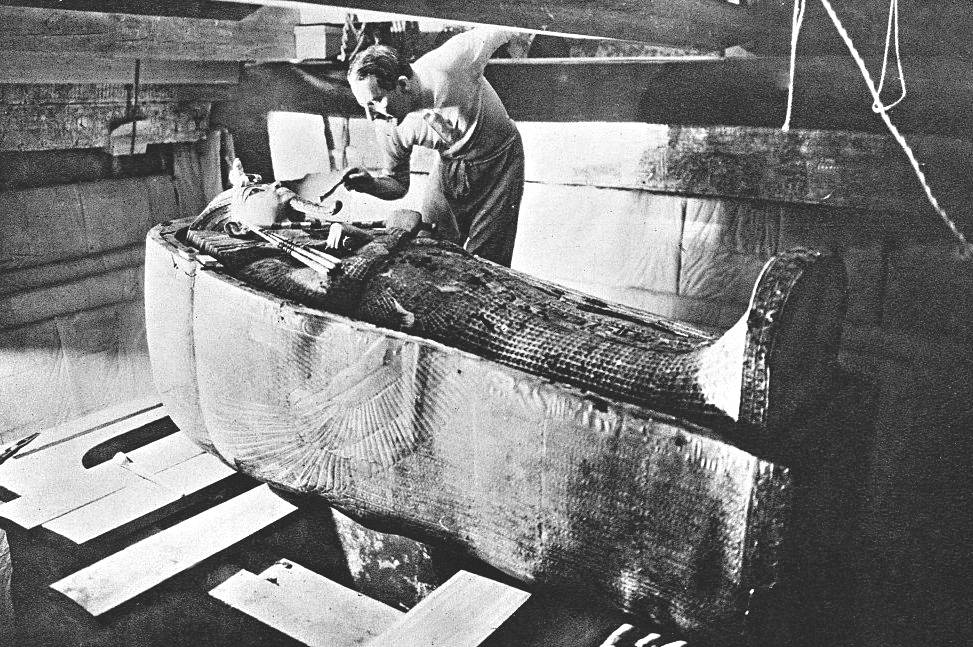
Howard
Carter, brushing off King Tut's mummy
These collective findings help us begin to paint a scientific picture of the mummy’s curse: In rare instances, Aspergillus can proliferate throughout a tomb, perhaps growing on grains left inside or on the mummies themselves, and then the fungal spores bombard the first people to disturb the resting place in hundreds of years as outside air roils the enclosed environment. The elderly and those with weakened immune systems would be most susceptible, perhaps developing a lung infection that leads to breathing problems and eventual death. Healthy individuals, on the other hand, might only suffer slight symptoms or none at all.
Researchers writing in a 2003 correspondence to The Lancet noted that this theory fits with the highly publicized death of Lord Carnarvon, who was one of the earliest entrants into King Tut’s tomb. He passed away five months after entering, supposedly of pneumonia.
“Spores of Aspergillus can remain dormant in the lungs of infected individuals for extended periods before being activated,” they wrote, adding, “On March 17, 1923, The Times of London reported that Lord Carnarvon suffered from ‘pain as the inflammation affected the nasal passages and eyes.’ This description is consistent with invasive Aspergillus sinusitis with local extension to the orbit.”
Concluding:
“Lord Carnarvon could readily have inhaled contaminated grain dust as the sealed tomb was broken into. Since his car accident in 1901, he had had numerous chest infections and would have been especially susceptible to the toxic mold. Indeed, this increased susceptibility could explain why so many others did not succumb to the same infection upon entry.”
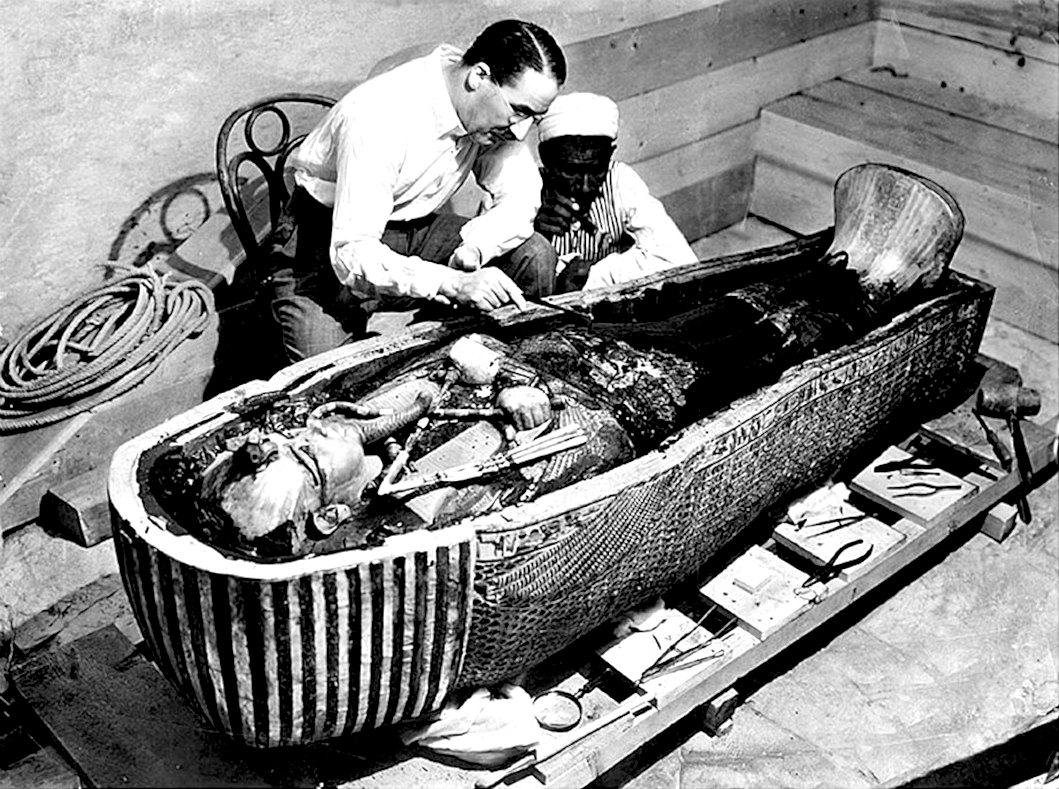
EARLY
LIFE
Carter spent much of his childhood with relatives in the Norfolk market town of Swaffham, the birthplace of both his parents. His father had previously relocated to London, but after three of the children had died young, Carter, who was a sickly child, was moved to Norfolk and raised for the most part by a nurse in Swaffham.
Receiving only limited formal education at Swaffham, he showed talent as an artist. The nearby mansion of the Amherst family, Didlington Hall, contained a sizable collection of Egyptian antiques, which sparked Carter's interest in that subject. Lady Amherst was impressed by his artistic skills, and in 1891 she prompted the Egypt Exploration Fund (EEF) to send Carter to assist an Amherst family friend, Percy Newberry, in the excavation and recording of Middle Kingdom tombs at Beni Hasan.
Although only 17, Carter was innovative in improving the methods of copying tomb decoration. In 1892, he worked under the tutelage of Flinders Petrie for one season at Amarna, the capital founded by the pharaoh
Akhenaten. From 1894 to 1899, he worked with Édouard Naville at Deir el-Bahari, where he recorded the wall
relief's in the temple of Hatshepsut.
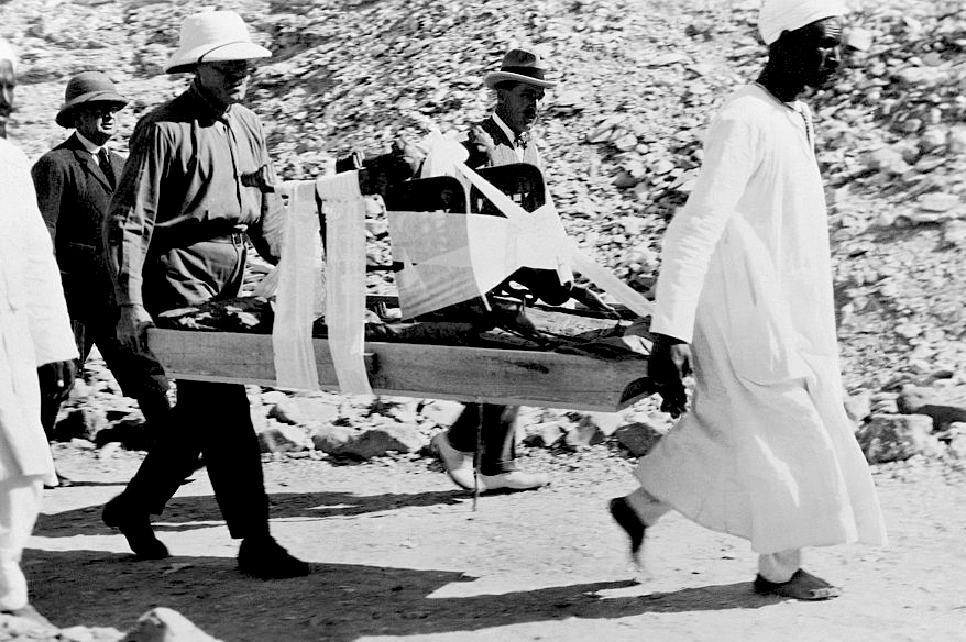
Carrying
a throne from the excavation
In 1899, Carter was appointed Inspector of Monuments for Upper Egypt in the Egyptian Antiquities Service (EAS). Based at Luxor, he oversaw a number of excavations and restorations at nearby Thebes, while in the
Valley of the Kings he supervised the systematic exploration of the valley by the American archaeologist Theodore Davis.
In the early 1902, Carter began searching the Valley of the Kings on his own. He initially aimed at the southeast rocky wall of the valley basin. Despite being an inaccessible area, within 3 days he found what he was looking for: stone steps, sepulchral entrance, corridor, sarcophagus chamber, in short, the last home of the fourth Thutmose, carefully stripped (except for a few furnishings and a cart). While digging to find Thutmose IV's final resting place, Howard unearthed an alabaster cup and a small blue scarab with Queen Hatshepsut's name on it.
On February 1903, sixty meters north of the tomb of Thutmose IV, Carter found a stone bearing the ring with the name of
Hatshepsut.
In 1904, after a dispute with local people over tomb thefts, he was transferred to the Inspectorate of Lower Egypt. Carter was praised for his improvements in the protection of, and accessibility to, existing excavation sites, and his development of a grid-block system for searching for tombs. The Antiquities Service also provided funding for Carter to head his own excavation projects.
Carter resigned from the Antiquities Service in 1905 after a formal inquiry into what became known as the Saqqara Affair, a violent confrontation that took place on January 8, 1905. between Egyptian site guards and a group of French tourists. Carter sided with the Egyptian personnel, refusing to apologise when the French authorities made an official complaint. Moving back to Luxor, Carter was without formal employment for nearly three years. He made a living by painting and selling watercolours to tourists and, in 1906, acting as a freelance draughtsman for Theodore Davis.
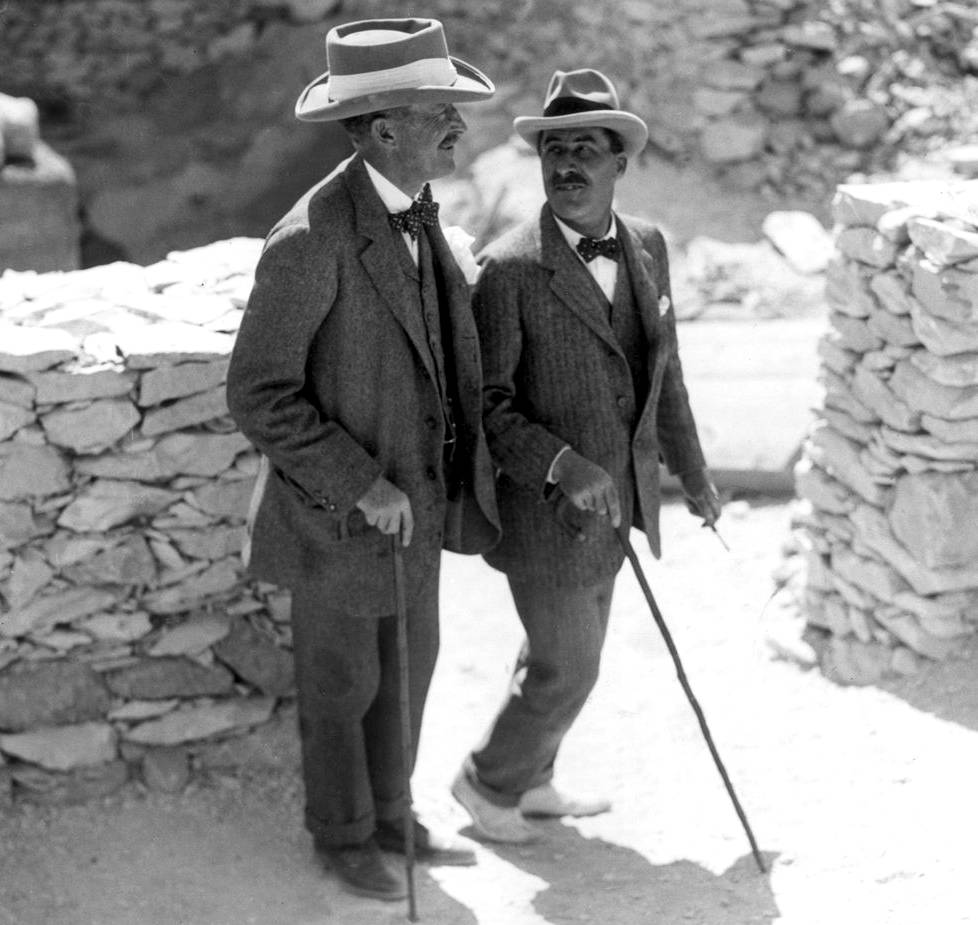
Lord
Carnarvon and Howard Carter, in Egypt
DISCOVERY OF TUTANKHAMUN'S TOMB
In 1907, Carter began work for Lord Carnarvon, who employed him to supervise the excavation of nobles' tombs in Deir el-Bahri, near Thebes. Gaston Maspero, head of the Egyptian Antiquities Service, had recommended Carter to Carnarvon as he knew he would apply modern archaeological methods and systems of recording. Carter soon developed a good working relationship with his patron, with Lady Burghclere, Carnarvon's sister, observing that "for the next sixteen years the two men worked together with varying fortune, yet ever united not more by their common aim than by their mutual regard and affection".
In 1914, Lord Carnarvon received the concession to dig in the Valley of the Kings. Carter led the work, undertaking a systematic search for any tombs missed by previous expeditions, in particular that of the Pharaoh Tutankhamun. However, excavations were soon interrupted by the
First World
War, Carter spending the war years working for the British Government as a diplomatic courier and translator. He enthusiastically resumed his excavation work towards the end of 1917.
By 1922, Lord Carnarvon had become dissatisfied with the lack of results after several years of finding little. After considering withdrawing his funding, Carnarvon agreed, after a discussion with Carter, that he would fund one more season of work in the Valley of the Kings.
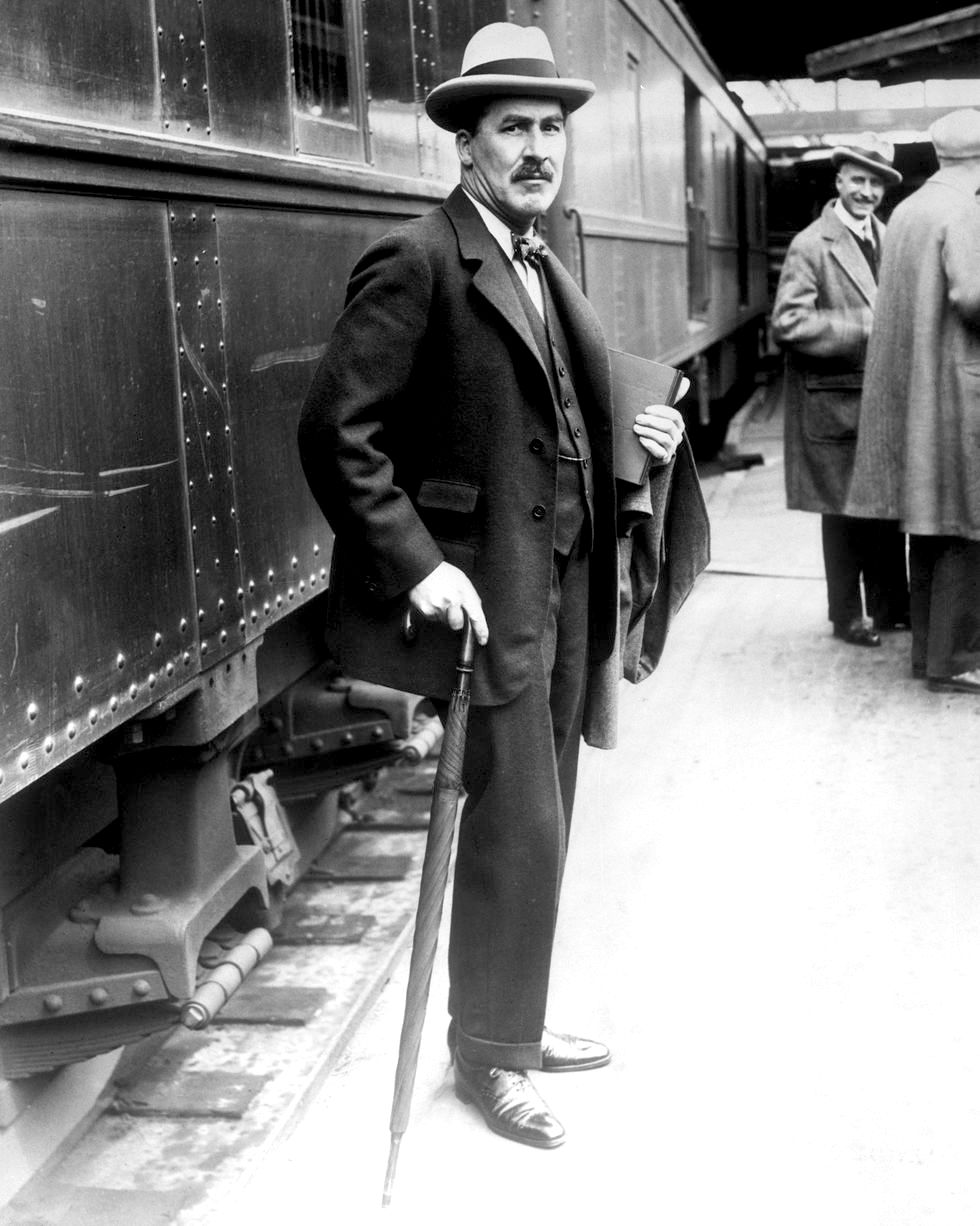
Howard
Carter catching a train
Carter returned to the Valley of Kings, and investigated a line of huts that he had abandoned a few seasons earlier. The crew cleared the huts and rock debris beneath. On 4 November 1922, their young
water boy accidentally stumbled on a stone that turned out to be the top of a flight of steps cut into the bedrock. Carter had the steps partially dug out until the top of a mud-plastered doorway was found. The doorway was stamped with indistinct cartouches (oval seals with hieroglyphic writing). Carter ordered the staircase to be refilled, and sent a telegram to Carnarvon, who arrived from England two-and-a-half weeks later on 23 November, accompanied by his daughter Lady Evelyn Herbert.
On 24 November 1922, the full extent of the stairway was cleared and a seal containing Tutankhamun's cartouche found on the outer doorway. This door was removed and the rubble-filled corridor behind cleared, revealing the door of the tomb itself. On 26 November, Carter, with Carnarvon, Lady Evelyn and assistant Arthur Callender in attendance, made a "tiny breach in the top left-hand corner" of the doorway, using a chisel that his grandmother had given him for his 17th birthday. He was able to peer in by the light of a candle and see that many of the
gold and ebony treasures were still in place. He did not yet know whether it was "a tomb or merely an old cache", but he did see a promising sealed doorway between two sentinel statues. Carnarvon asked, "Can you see anything?" Carter replied: "Yes, wonderful things!" Carter had, in fact, discovered Tutankhamun's tomb (subsequently designated KV62).
The tomb was then secured, to be entered in the presence of an official of the Egyptian Department of Antiquities the next day. However that night, Carter, Carnarvon, Lady Evelyn and Callender apparently made an unauthorised visit, becoming the first people in modern times to enter the tomb. Some sources suggest that the group also entered the inner burial chamber. In this account, a small hole was found in the chamber's sealed doorway and Carter, Carnarvon and Lady Evelyn crawled through.
The next morning, 27 November, saw an inspection of the tomb in the presence of an Egyptian official. Callender rigged up
electric lighting, illuminating a vast haul of items, including gilded couches, chests, thrones, and shrines. They also saw evidence of two further chambers, including the sealed doorway to the inner burial chamber, guarded by two life-size statues of Tutankhamun. In spite of evidence of break-ins in ancient times, the tomb was virtually intact, and would ultimately be found to contain over 5,000 items.
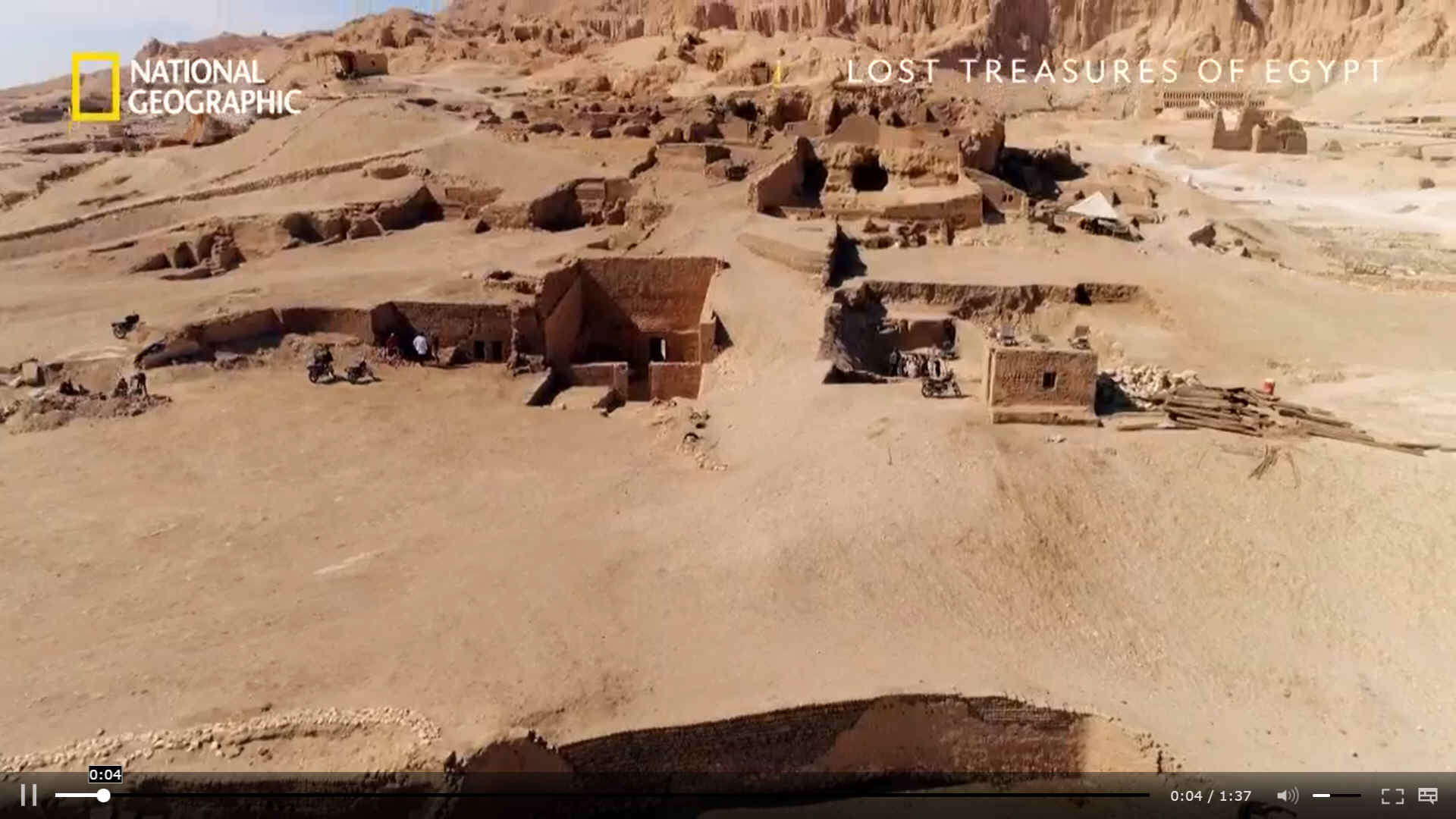
Lost
treasures of Egypt, one mile from Valley of the Kings
On 29 November the tomb was officially opened in the presence of a number of invited dignitaries and Egyptian officials.
Realising the size and scope of the task ahead, Carter sought help from Albert Lythgoe of the Metropolitan Museum's excavation team, working nearby, who readily agreed to lend a number of his staff, including Arthur Mace and archaeological photographer Harry Burton, while the Egyptian government loaned analytical chemist Alfred Lucas. The next several months were spent cataloguing and conserving the contents of the antechamber under the "often stressful" supervision of Pierre Lacau, director general of the Department of Antiquities. On 16 February 1923, Carter opened the sealed doorway and confirmed it led to a burial chamber, containing the sarcophagus of Tutankhamun. The tomb was considered the best preserved and most intact pharaonic tomb ever found in the Valley of the Kings, and the discovery was eagerly covered by the world's press. However, much to the annoyance of other newspapers, Lord Carnarvon sold exclusive reporting rights to The Times. Only Arthur Merton of that paper was allowed on the scene, and his vivid descriptions helped to establish Carter's reputation with the British public.
Towards the end of February 1923, a rift between Lord Carnarvon and Carter, probably caused by a disagreement on how to manage the supervising Egyptian authorities, temporarily halted the excavation. Work recommenced in early March after Lord Carnarvon apologised to Carter. Later that month
Lord Carnarvon contracted blood poisoning while staying in Luxor near the tomb site. He died in Cairo on 5 April 1923. Lady Carnarvon retained her late husband's concession in the Valley of the Kings, allowing Carter to continue his work.
Carter's meticulous assessing and cataloguing of the thousands of objects in the tomb took nearly ten years, most being moved to the Egyptian Museum in Cairo. There were several breaks in the work, including one lasting nearly a year in 1924–25, caused by a dispute over what Carter saw as excessive control of the excavation by the Egyptian Antiquities Service. The Egyptian authorities eventually agreed that Carter should complete the tomb's clearance. This continued until 1929, with some final work lasting until February 1932.
Despite the significance of his archaeological find, Carter received no honour from the British government. However, in 1926, he received the Order of the Nile, third class, from King Fuad I of Egypt. He was also awarded an honorary degree of Doctor of Science by Yale University and honorary membership in the Real Academia de la Historia of Madrid, Spain.
Carter wrote a number of books on Egyptology during his career, including Five Years' Exploration at Thebes, co-written with Lord Carnarvon in 1912, describing their early excavations, and a three-volume popular account of the discovery and excavation of Tutankhamun's tomb. He also delivered a series of illustrated lectures on the excavation, including a 1924 tour of Britain, France, Spain and the United States. Those in New York and other US cities were attended by large and enthusiastic audiences, sparking American Egyptomania, with President Coolidge requesting a private lecture.
REFERENCE
https://
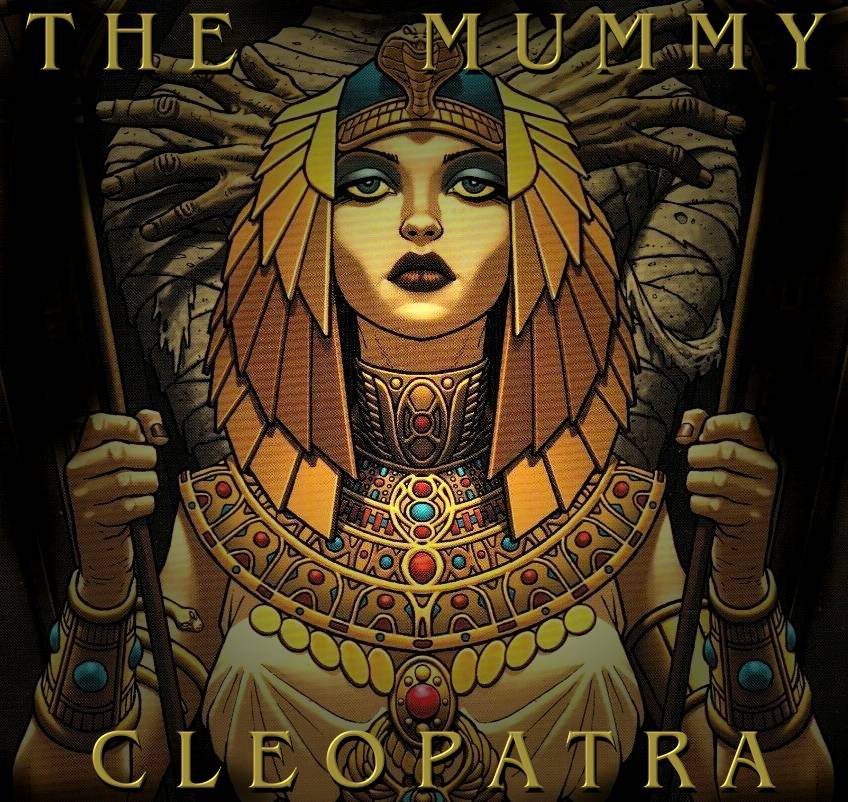
THERE
IS HOPE FOR CLEOPATRA
It
takes great dedication, good hunches and some luck. But,
with determination almost anything is possible.
|






